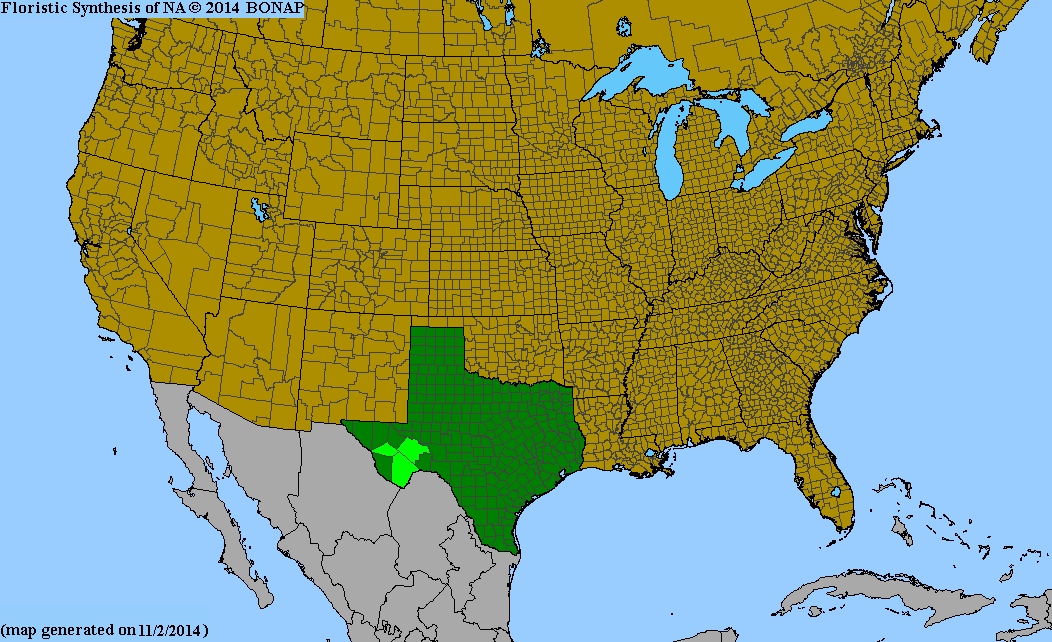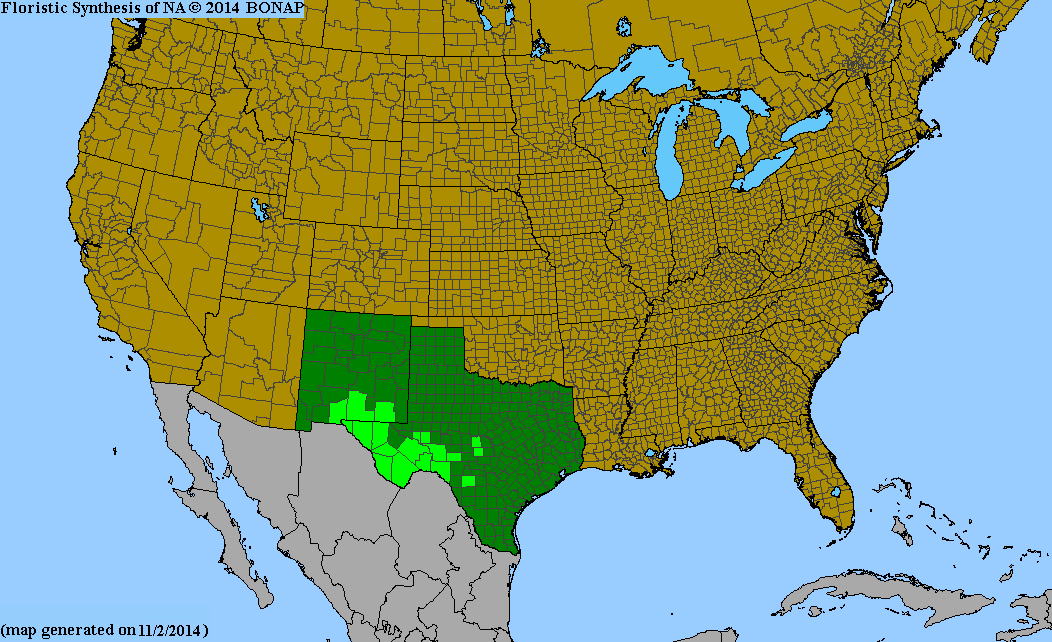Click on the images below to see larger versions.
| Scientific Name | Agave havardiana | USDA PLANTS Symbol | AGHA |
| Common Name | Century Plant, Havard Agave | ITIS Taxonomic Serial No. | 182674 |
| Family | Asparagaceae (Asparagus) | SEINet Reference |
Click Here |
| Description | Habitat: Gravelly to rocky, often calcareous grasslands, desert scrub, mountain woodlands; 4000 to 6500 ft. Plant: Basal rosette of leaves 20 to 32 inches across and 40 to 60 inches tall with flowering stalk 5 to 23 feet tall. Leaves: Lanceolate to broadly lanceolate grayish-green,stout, fleshy, leaves up to 2 feet long with sharp teeth spaced out along margins and very sharp spine at tip; overall concave in cross-section. Inflorescence: Scape (stalk) 5 to 23 feet tall with open panicle of 12 to 15 large umbels, each with several clusters of 21 to 48 erect, tubular, greenish-yellow flowers; tepals often red-tinged; lance-shaped bracts several inches long along scape. Bloom Period: June to July. Plant blooms once when mature (20 to 40 years old) and then dies. References: "Manual of the Vascular Plants of Texas" by Correll and Johnston and SEINet. |
BONAP Distribution Map |
Texas Status: Native- Endemic to Big Bend region |
| Scientific Name | Agave lecheguilla | USDA PLANTS Symbol | AGLE |
| Common Name | Lecheguilla | ITIS Taxonomic Serial No. | 182675 |
| Family | Asparagaceae (Asparagus) | SEINet Reference |
Click Here |
| Description | Habitat: Desert habitat, open, arid, rocky slopes. Plant: Basal rosette of leaves 16 inches tall and 24 inches across with a leafless flowering spike 8 to 12 feet high. Leaves: Basal rosette of straight to curved linear leaves 12 to 20 inches long; margins with sharp, downflexed teeth 3/4 to 1-1/2 inches apart; very sharp spine at tip. Inflorescence: Spike 6 to 12 feet tall with dense clusters of many flowers in upper half blooming from bottom to top; 1 to 3 flowers in each cluster; greenish ovary at flower base, spreading yellow to red or purplish tepals 1/2 to 3/4-inch long; stamens with yellow or red filaments 1 to 1-3/4-inches long and yellow anthers at tips, 3/8 to 5/8-inch long. Bloom Period: May to July. References: "Manual of the Vascular Plants of Texas" by Correll and Johnston and SEINet. |
BONAP Distribution Map |
Texas Status: Native |












